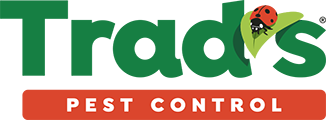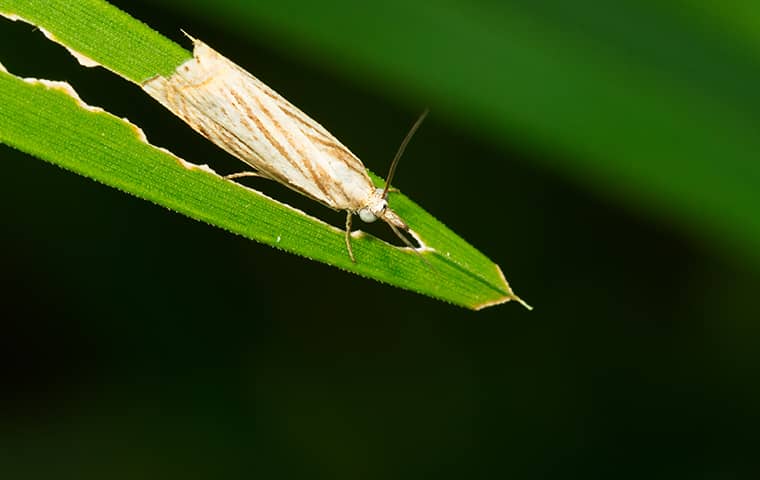One of the joys of spring showers is that they make everything bloom and green. To enhance the green appearance and eliminate weeds in our lawns, Jacksonville homeowners invest money in pre-emergents and fertilizers because opening the door in the morning to a lush green, weedless lawn gives one a sense of pride and accomplishment.
The sense of satisfaction from a green lawn can quickly disappear when sod webworms invade the yard. Sod webworms can take a green, lush yard and turn it into a brown, weed-infested wasteland. If your lawn is becoming a version of the badlands, you need the Jacksonville pest control company with decades of experience in lawn care and pests, Trad’s Pest Control. We began as a gardening center in 1971, and in 1979, we added our pest control division, so we have extensive experience in both areas.
What Do Sod Webworms Look Like?
Sod webworms are immature moths. Before they develop into adults, they go through the larval stage. Sod webworms are moths in the larval, or second, stage of development. Rough hairs cover the dense body of a sod webworm which range in color from pinkish white to yellow; their heads are yellowish-brown to black. Before the sod webworm enters the pupation stage, it has matured to a length of one inch. By late spring, the sod webworms have developed into adult moths.
An adult sod webworm is a pale yellow-brown moth about 1/2 inches long. On their heads are two projections resembling a snout. The wings create a wingspan of 3/4 inch and fold around its body at rest, giving it a tubular appearance. If you see moths flying in a zigzag pattern over your lawn, you likely have sod webworms in the grass.
Why Do Sod Webworms Destroy Turfgrass
When the developing moths are in the larval stage, they feed on grass. During the winter months, these Florida insects hibernate, but when the temperature rises in the spring, they reemerge and resume feeding on the grass.
Initial signs of sod webworm infestation include notched and ragged grass blades, but as they mature, the sod webworms in Florida build cocoons and begin chewing grass off at the thatch line to pull into their silk-lined burrows.
By the mid-summer, the sod webworms enter the pupation stage while a new batch of eggs is hatching. Due to our many months of warm weather, several generations of sod webworms can invade our Jacksonville lawns causing extensive damage.
Tips To Deter Sod Webworms In Jacksonville
To discourage these Florida bugs from destroying your lawn, try the following:
- Create a healthy lawn. Apply appropriate fertilizers to create a robust root system.
- Water the lawn. Because sod webworms make cocoons in the dry thatch between the grass and earth, regularly watering the yard will keep the thatch moist and less appealing to the sod webworms.
- Dethatch the yard. Removing the dead grass and other organic material between the grass blades and soil makes the environment less hospitable to sod webworms.
- Apply parasitic nematodes. These organisms use sod webworms as a host causing their death. You can purchase these at a garden center.
These tips will help deter sod webworms from infesting your Jacksonville lawn, but they are not the best way to eliminate them.
The Best Way To Get Rid Of Sod Webworms Is With Professional Help
The best way to eliminate sod webworms is with our professionals from Trad’s Pest Control. Our pest control experts know the best treatments to get rid of sod webworms, and our lawn care team members can work with you to restore the lawn. Contact us today and set up an inspection so we can get your lush, green Jacksonville yard back to its former glory.

